
10 minute read
The Location of Birthplace of Lord Rama at Ghuram is within the Supreme Court Judgment on Ayodhya
from The Location of Birthplace of Lord Rama at Ghuram is within the Supreme Court Judgment on Ayodhya
The Location of Birthplace of Lord Rama at Ghuram is within the Supreme Court Judgment on Ayodhya
We have suggested that Biblical Abram was the same person as Hindu Rama. According to Bible Abram lived at a place name Ai while according to the Hindu texts Lord Rama lived at a place name Ayodhya. We suggest that Ai and Ayodhya are name of the same place.
Advertisement
Ai and Ayodhya are name of the same place.
Our study shows that Biblical Ai and Hindu Ayodhya could be located at Ghuram (pronounced Ghadam) in Patiala District of Punjab. Ghuram is located on the banks of the west-flowing Ghaggar River. The Hindu tradition, however, holds that Ayodhya was located in the State of Uttar Pradesh on the banks of eastflowing Sarayu River. Therefore, we have before is two totally different locations for Ayodhya. Our suggestion is that it is located at Ghuram-on-Ghaggar while the mainstream suggestion is it is located at Ayodhya-on-Sarayu.

Ayodhya could be located Ghuram on Ghaggar or Ayodhya on Sarayu?
The Supreme Court of India was ceased of a matter regarding a disputed structure at Ayodhya in Uttar Pradesh. This structure was built by the Mughal King Babar around 1528 CE. The Supreme Court decided that according to the faith, belief and trust of the Hindus the birthplace was located at Ayodhya-on-Sarayu.
The question before us is whether the actual birthplace of Ram—not on the basis of faith, belief and trust alone—but the actual birthplace of Lord Rama was located at the Ayodhya-on-Sarayu or at Ghuram-on-Ghaggar. We will discuss the Supreme Court judgment from this perspective.

Supreme Court has not decided the actual birthplace of Lord Ram
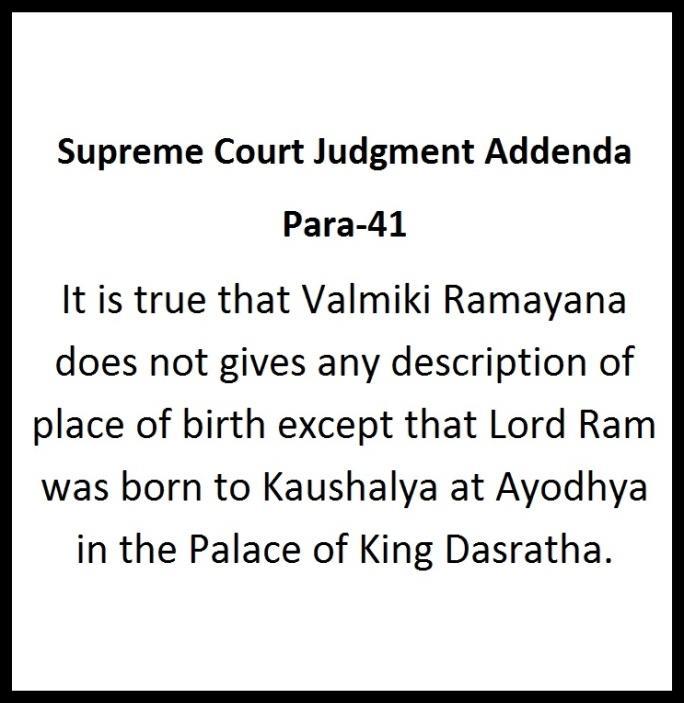
Supreme Court is Silent on the actual birthplace of Lord Ram
In para 41 the Supreme Court has said “It is true that Valmiki Ramayana does not gives any description of place of birth except that Lord Rama was born to Kaushalya at Ayodhya in the Palace of King Dasratha.”Then the Supreme Court goes on to discuss the archeological evidence found during excavations at Ayodhya-on-Sarayu. At Para 453 it says that the structural activities in the excavated area had commenced in the Kushan Period. The Kushan Period start at about 30 CE.

Excavation at Ayodhya do not Support birthplace of Lord Ram here
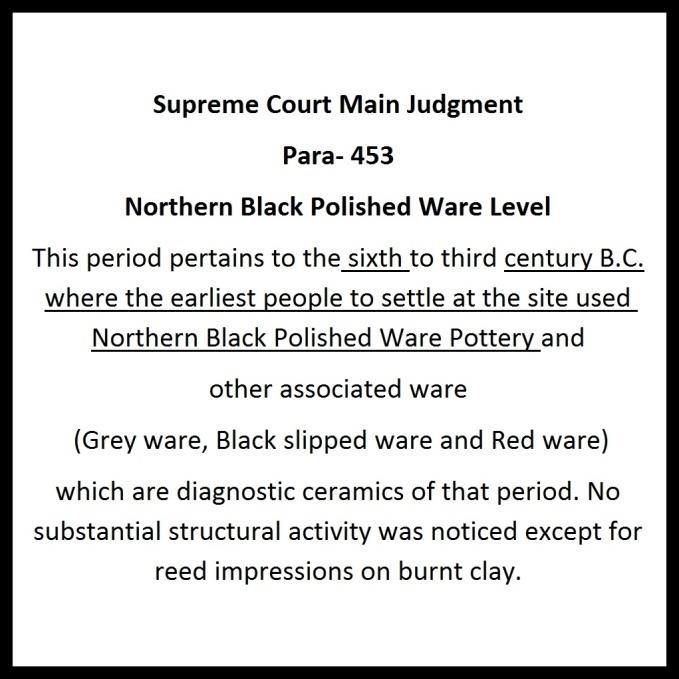
Settle Habitation at Ayodhya was only after 6 century BCE
It goes on to say that the earliest evidence of bricks and stones structure was
from in this period and that the earliest people to settle at the site used Northern Black Polished Ware Pottery and which is found in about 6 th Century BCE. My
friend and archaeologist Dr BR Mani, who excavated the site, has informed me that the earliest evidence of nomadic habitation (not of bricks) was found from
about 1700 BCE. Now, according to the Hindu tradition, Lord Rama was born
before 17 th Century BCE. My personal take is that he was born around 2000 BCE.
Therefore, no archaeological evidence of habitation has been found at Ayodhya at the time of Ram.
On the other hand, Dr Manmohan Kumar of MD University Rohtak has examined the artefacts found on the surface of the mound at Ghuram-on-Ghaggar. He found artefacts from the Harappan Period which stretches from 3000 BCE to 1500 BCE. Therefore, from the archeological evidence point of view, Ghuram-onGhaggar stands better than Ayodhya-on-Sarayu.

Dr Manmohan Kumar of MD University Rohtak has examined the artefacts at Ghuram.

Ghuram on Patiala was inhabitant in the Harappan Period when lord Ram was Born.
The second ground of the Supreme Court holding that the birthplace of Lord Rama was located at Ayodhya-on-Sarayu was that the Guru Nanak Dev had visited the birthplace of Lord Rama here before Babar had constructed the disputed structure in 1528.
However, we do not have any evidence that Guru Nanak said that Ayodhya-onSarayu was the birthplace of Lord Rama. He only visited the place. We do not know what he thought. He may have thought that the temple at Ayodhya-onSarayu was the actual birthplace of Lord Rama; or he may have thought that it was another of the many temples of Lord Rama. We do not know what he believed.
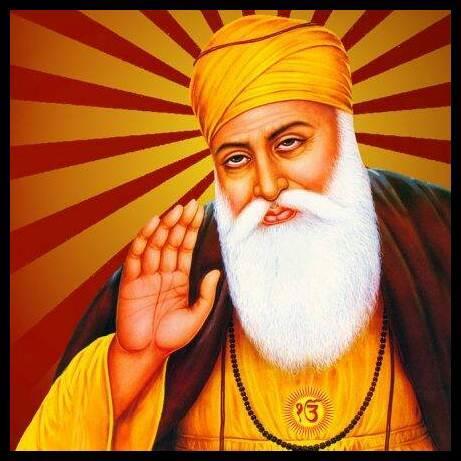
Guru Nanak Dev had visited Ayodhya before Babari Masjid was made

Dasam Granth says that Lord Rama’s Mother Kausalya was born to the king of Ghuram at Patiala.
Moreover, we also have evidence from the Dasam Granth, which also is a sacred scripture of the Sikhs, which says that Mother Kaushalya was born to the king of Ghuram at Patiala. The local tradition at Ghuram-on-Ghaggar holds that Mother Kaushalya had come to her maternal parent’s home at Ghuram to give birth to her first son—Lord Rama. Therefore, even if we consider that the visit of Guru Nanak Dev to Ayodhya-on-Sarayu indicates that Lord Rama was born at this place, this evidence is contradicted by the Dasam Granth read with the local tradition which suggests that he was born at Ghuram-on-Ghaggar. The two places are placed evenly on the strength of this scriptural evidence.
In Para 65 of the judgment the Supreme Court has quoted the German Scholar Hans Bakker to the effect that the historicity of Ayodhya-on-Sarayu can be questioned. Bakker had studied the references to Ayodhya in various religious texts and come to the conclusion that the location of the Scriptural Ayodhya at
Ayodhya-on-Sarayu was made only after the 7 th Century CE. He says that there
was no evidence that Scriptural Ayodhya was located at Ayodhya-on-Sarayu before this time.

German Scholar Hans Bakker says that historicity of Ayodhya-on-Sarayu may be questioned.

The Scriptural Ayodhya was located at Ayodhya-on-Sarayu after 7 th century
CE.
Bakker says that the Sanskrit text do not indicate a location for Ayodhya before
200 CE.The site of Ayodhya-on-Sarayu is identified with the City of Saketa at 4the century CE and identified with the Scriptural Ayodhya in the 7 th century CE.
It is possible that when Guru Nanak Dev visited Ayodhya-on-Sarayu before 1528 CE, the transposition of the birthplace of Lord Rama may have already taken place from Ghuram-on-Ghaggar to Ayodhya-on-Sarayu. Therefore, the belief that Scriptural Ayodhya was located at Ayodhya-on-Sarayu at 1528 CE does not establish that this was the birthplace of Lord Rama. It is important to note that the Supreme Court in its Judgment repeatedly says that it was giving this Judgment on the basis of “faith, belief and trust” of the Hindus. I am not disputed
this. The Supreme Court judgment is welcome. It is indeed true that the “faith, belief and trust” of Hindus is that Lord Rama was born at Ayodhya-on-Sarayu.

The Supreme Court has not decided where the actual birthplace of Lord Ram was located?
Therefore, we may still examine whether the actual birthplace of Lord Rama may have been located at Ayodhya-on-Sarayu or not. The local geography of Scriptural Ayodhya described in the Skand Purana indeed matches with Ayodhya-on-Sarayu. However, the Skand Purana also gives some indications of the larger geography of the Scriptural Ayodhya. It says that when Lord Rama had left Ayodhya towards the end of his life, he walked one-half yojana south and then walked west to reach the Sarayu River. Similarly, the Valmiki Ramayana says that Lord Rama walked one and one-half yojana and then found the Sarayu River facing west. In the Google Picture given below we can see that there is no Sarayu River southwest of Ayodhya-on-Sarayu.
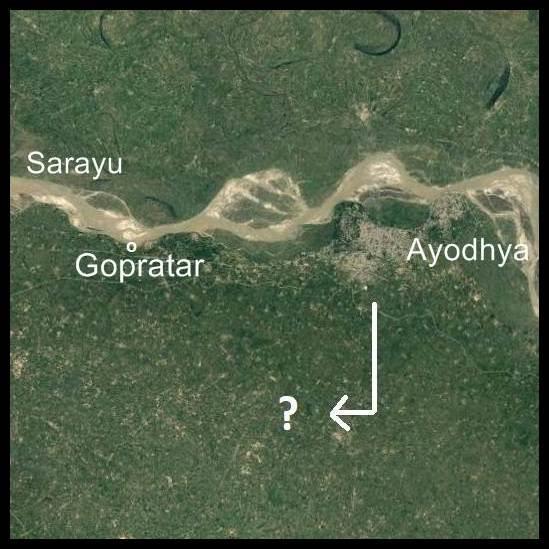
There is no Sarayu southwest of Ayodhya-on-Sarayu.
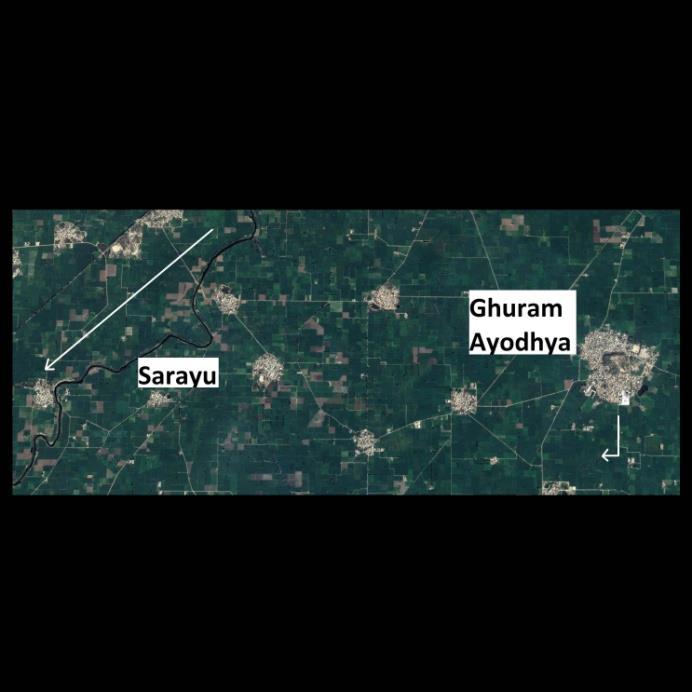
Southwest of Ghuram is the Sarayu River of Lord Rama
On the other hand the Goggle picture of Ghuram-on-Ghaggar shows that southwest of Ghuram flows the Ghaggar River. Therefore, this geographical Description matches with Ghuram-on-Ghaggar.
The Valmiki Ramayana gives an interesting description. Lord Rama and Lakshmana stopped at the Ashram of Sage Bharadwaj when they were travelling to south. Here the Sage told them: “you two brothers go to the place where the Ganga had joined the Yamuna with a westward flow.”

Valmiki Ramayana Says that Ganga and Yamuna flow to the west which does not match with Ayodhya on Sarayu
This means that Ganga and Yamuna were flowing to the west at that time. Geological evidence indicates that the Yamuna River was indeed flowing westward at that time as shown in the picture below. The “abandoned channel” marked on this picture is the westward flowing Yamuna before 1800 BCE. Thus Yamuna would have flowed through this channel at the time that Lord Rama lived. Ganga may have been a tributary of this westward flowing Yamuna. These two rivers may have joined near the Bharadwaj Ashram at that time.
The Ramayana says that the Sarayu was a tributary of the Ganga. It follows that the Sarayu too would have been a westward flowing river. It is possible that the Ghaggar was the Sarayu since it flows westward; and the Scriptural Ayodhya may have been located on her banks at Ghuram. The westward flowing Yamuna told in Valmiki Ramayana matches with Ghuram-on-Ghaggar and does not match with the living Ayodhya where the Ganga, Yamuna and Sarayu Rivers—all flow eastward.

Yamuna River flows west at that the time of Lord Ram
As far as the “faith, belief and trust” of Hindus is concerned, we find another “faith, belief and trust”that Lord Rama was born at Ghuram-on-Ghaggar. We give below a mapthat was attached to a resolution of the Village Panchayat of Ghuram. It clearly shows that the local people believe that here was the birthplace of Lord Rama. I have visited Ghuram and people around that area are very clear that Mother Kaushalya had come and gave birth to Lord Rama at this place.

Local people at Ghuram-on-Ghaggar believe that here was the birthplace of Lord Ram.
Therefore, in so far as the “faith, belief and trust”of the Hindus is concerned, it is available at both at Ayodhya-on-Sarayu and at Ghuram-on-Ghaggar. However, we must admit that the “faith, belief and trust”is very strong at Ayodhya-on-Sarayu.
Considering everything, my submission is that the Supreme Court Judgment only held that at the time that Babar came into India and constructed the disputed structure at Ayodhya-on-Sarayu, the birthplace of Lord Rama was located here as per the “faith, belief and trust” of the Hindus. The Supreme Court not said a single world about where the actual birthplace of Lord Rama was established which would have required a deeper appreciation of the geographical and archaeological evidences. Therefore, going forward, we must dispassionately examine whether the actual birthplace of Lord Rama could be located at Ghuramon-Ghaggar. If we have to establish that Lord Rama was a historical figure then we
have to also show where he may have lived and we have to backup our suggestion with archaeological and geographical evidence.
Biblical archaeology today is looking at every place mentioned in the Bible and trying to establish their historicity. We must similarly examine the places mentioned in the Ramayana and try to establish their historicity. We face an additional challenge of showing that our proposed location of Scriptural Ayodhya also matched with the descriptions of Biblical Ai, where Lord Abraham lived.
For More Information Please Visit –http://www.commonprophets.com/
Email- Commonprophets@gmail.com
Youtube- https://youtu.be/aPD71aJKtqA

